Elephant and Castle is London’s gentrification ‘ground zero’ – where a blueprint for other large scale regeneration projects is to be made.
There is an ethnically diverse community of traders, workers, shoppers, passers-by and residents who all rely on the affordable services provided by the Elephant and Castle Shopping Centre in Southwark. However, this appears to matter very little to the local council and property developer, which plans to turn the shopping centre and surrounding area into a new sought-after destination for the rich.
IRR’s Jessica Perera interviews researcher and activist Santiago Peluffo from Latin Elephant, a registered charity set up to support ethnic minority traders at risk of displacement. In what follows, Santiago cogently puts the demolition of the shopping centre in a wider political context, linking the activities of local councils and public bodies to new real estate ventures in London, increasingly an outlet for opaque money. But he also tells us about the incredible campaign work undertaken by traders and Latin Elephant, as they fight to protect the rights and dignity of small business owners of BAME descent.
Jessica Perera: Tell me about Latin Elephant the organisation you work for, how did it come into existence and what it is fighting for?
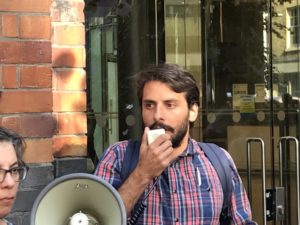
Santiago Peluffo: Latin Elephant (LE) is a registered charity based in Elephant and Castle, Southwark and founded in 2014 by the activist/researcher Patria Roman-Velazquez, a Puerto Rican immigrant from the United States, in response to the growing corporate interest in the area. At the time, two large council estates, the Heygate and the Aylesbury, were each undergoing review for demolition and/or redevelopment. But Patria was particularly struck by the regeneration of the shopping centre, tube station and surrounding land by private property developers which she noticed would displace the large Latin American community working in the centre and were largely invisible, as the developers did not seem to think about the diversity and character of the
area (the total Latin American population in Southwark is 9 per cent, according to the 2011 census and combined with the neighbouring borough of Lambeth, this is the biggest concentration of Latin Americans living and working across the UK).
It is concerning how developers, with the complicity of certain local authorities, seem willing to push out immigrant ethnic communities from Zone 1, 2 and 3 and bring in a new population. LE’s main focus is to look after business tenants who have been working and living in Elephant and Castle for decades and are being forced to leave because of these ‘regeneration’ projects. The traders spend fourteen hours, seven days a week in the shopping centre. They are very much connected to the wider community who have lived in the area for a long time. During the early stages of setting up LE, we produced a plan for a new Latin Quarter in collaboration with some Latin American architects and artists. Our idea was to pedestrianise the area and create this Latin American hub of bars, restaurants, cafes, community centres – rehousing all of the old businesses. We contacted the council and invited them to comment on the plans, however they only gave us a verbal commitment and nothing was taken forward in practice, despite them outwardly welcoming the initiative. The council was already working with the private property developer Delancey, which, at the time, had not yet submitted a formal planning application for the site, but Patria had noticed during this pre-consultation period that there was no relocation strategy in place for the existing business tenants. We were very much aware of who was the David and who was the Goliath in this battle. But not a single decision that we have taken has not consulted the community of traders. I think we are as vocal as we can be, bearing in mind that we are a registered charity, so speaking of ‘social cleansing’, for example, is a bit tricky.
JP: Elephant and Castle has been called London’s gentrification ‘ground zero’ – why?
SP: The regeneration of Elephant and Castle will have a huge impact on other redevelopment projects across London because of the scale. But I also think it is because of the characteristics of the area; there is such a large BAME population, which is very diverse and, also, there is the matter of the demolition of two very large estates. I mean, they call it redevelopment, but it is actually something different. You really need to look closely, because it is a model for other [dispossession] projects. This is what I say when we give talks at conferences and round tables. I would advise communities and campaigns at risk of displacement to act as quickly as they can, bring the community to respond to the plans even before the developers submit the planning applications. What residents have had to endure with Lendlease, the private developer for the Heygate Estate, and Delancey for the shopping centre, has set a really bad precedent for other so called ‘opportunity areas’ across London.
JP: When you say ‘opportunity areas’ are you referring to the New London Plan that is currently being drafted by the Mayor’s Office for the Greater London Authority (GLA), if so, can you explain a bit more about this?
SP: For me, the word opportunity sounds like it is drafted by developers and investors, there is an ‘opportunity’ for them because this land, although it is currently priced as Zone 3, has the economic potential to create Zone 1 prices; where a studio flat would sell for one million pounds. The opportunity is for the developers who can purchase land and then sell it for ten times the original value. These are the facts. Vice ran a report on the first phase of the Lendlease regeneration scheme, where previously the Heygate Estate used to be; all of the new buyers were from abroad. So, when we sit with local councillors one of our arguments is: are these developers redeveloping for the constituents you represent? Regeneration is out of control. All Londoners, but particularly those who lack any privileges, like working-class ethnic minorities, are especially affected. It has become a difficult place to live and work in, even so-called ‘affordable goods’ are now unaffordable.
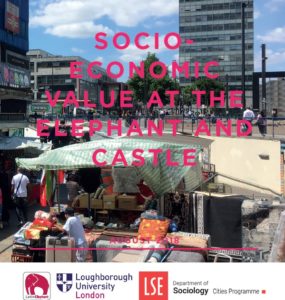
The latest report we have produced, The Social Economic Value at the Elephant and Castle states that we are not only campaigning for what is going to be lost in terms of the traders and their livelihoods, but the threat that the demolition and eradication of this site poses to the local community which will no longer be able to, for example, buy a coffee for a pound or lunch for £4.50 or get a mobile repaired for £5.00. There is a population that needs these affordable services and goods, and they are being overlooked.
JP: What is the situation at present, has LE managed to secure any new sites for the traders being displaced?
SP: So far, we have secured three relocation sites all within a two-minute walk of the current shopping centre, bearing in mind previously there wasn’t even a mention of a relocation strategy by the council – we had to campaign for this. And depending on how the final picture looks, we will hopefully have secured the relocation of around 60 per cent of traders all with low rents, but that is still a 40 per cent loss. The new site will take about five to six years to build but we have secured a first refusal option for displaced traders so that they can come back at discounted rents for fifteen years.
Initially, Delancey proposed that only seven out of 100 traders would be provided with relocation sites, and all meetings they held with the traders were informal, so whatever was discussed was not necessarily reflected in the planning talks. We had to campaign, present them with the facts, expose the wrongdoings and the stories of the traders. We created this interactive map that allows you to visualise the traders and their shops within the centre, and also allowed them to share their stories because that is much more effective for a councillor to listen directly to those affected.
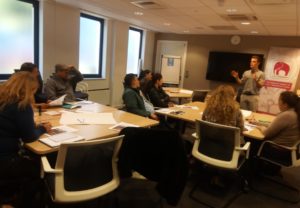
And in five to ten years there’ll be a new battle, because we are trying to make it so the traders can return, but it is quite complicated as this is something that the local authority does not have the power to legislate – the market has gone crazy, it is exclusionary, ordinary people do not understand how it works. So we run free business readiness workshops with the traders to help them understand these legislative changes, commercial property law, how to negotiate better leases and what their rights are. This is really important because the shopping centre has changed hands a few times over the years and as a result most of the traders have been continuously issued leases that do not have protective clauses. Many of them were unaware of this and as a result, very few have been able to consult a solicitor. When Delancey took over in 2013 once again they too issued new contracts without any protective clauses, and this is why, now, traders are not protected. The majority of their current contracts are made out of thin air, they are worthless.
The market tends to design these unprotected contracts for small businesses, but for those with more economic power, such as developers and investors, it is made easier for them to come and go, speculate and leave.
JP: There are twenty-one core projects in Southwark right now, what sort of community do you see here in five or ten years?
SP: If you think about how the Latin American community across London, it has been targeted, and I wouldn’t say it is a just a coincidence – two very large Latin hubs in Southwark and Haringey are being forced out. But the clustering of businesses at these sites is crucial to the dynamics of the community, if you disperse it, it loses its strength, its vibe, its heart and spirit. You know, people every Friday and Saturday come to dance in the nightclubs at the Latin Quarter, this is special. There is a vibe here that is irreplaceable and for a city like London to lose a place like this or Edgware Road, or Chinatown or Brixton, the city is losing its multicultural identity. The city is starting to become more sterile, and you can no longer distinguish one place from another. Having said that, the campaign to save the Latin Village in Haringey has been amazing. Although they have fought for almost ten years, they’ve still managed to get some positive results for the traders.
If small businesses are not represented as a collective with one strong voice – developers can take over very easily. What is really interesting is that people who draft these planning applications on potential redevelopment sites can be former councillors. It is a revolving door, where they acquire the knowledge working as a councillor for some years and they take up a new position working with developers and use their knowledge to help get applications through.
JP: What do you make of the 2012 Southwark council Equalities Assessment paper which stated that the regeneration of Elephant and Castle would have a disproportionate effect on BAME communities – forced out of their homes, businesses and community spaces?

SP: Councils legally are required to conduct Equalities Assessments. In the case of the shopping centre, there were none. So we pushed for two. During the first one, the percentage of respondents from a Latin American background was only 3 per cent, which does not mirror the borough or the shopping centre. Firstly, of all the businesses there, around 25 per cent are Latin American, and secondly, 50 per cent of consumers are also from this background. We pushed for a second one to incorporate the well-used bingo hall, this time taking into account the large elderly, female and black populations which use the shopping centre. However, the response from the council and Mayor of London was terrible. The Mayor, in particular, issued two reports which gave Southwark council effectively the green light to continue with its redevelopment plans. Councils are meant to assess whether the positives outweigh the negatives, and in this case, they thought the building of 979 new homes, despite the fact the vast majority will be for private renters, outweighed displacing the traders and community. The Equalities Assessment is absolutely necessary, but the way the system works, the weight it has in the application process overall, is not considered thoroughly.
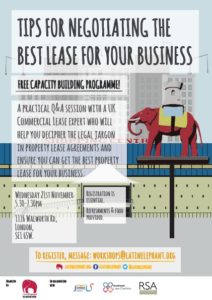
However, in terms of potential judicial reviews, you can actually use the Equalities Assessment to prove that a specific ethnic group has been disproportionately affected. And the law says the local authorities have to take due regard in protecting these groups.
JP: The shopping centre looks very rundown, I recently walked through it with a member of Southwark Notes and discussed how the process of ‘managed decline’ [1], is instrumental in the way authorities condemn buildings and then call for regeneration. What do you make of this?
SP: That’s 100 per cent true. Poor maintenance of the centre has been paramount in building an argument for redevelopment. While the maintenance of the shopping centre is covered by Section 106 (legal agreement) of the development, which Delancey should honour, all they appear to have done is just paint the outside. Actually, the other day I remember there was a heavy storm and one of the cafés inside had a ridiculous leak, which was a massive health and safety issue, that Delancey has not seen to up till now. Also, the toilets are constantly blocked, there are incidents where people have been mugged inside the centre but security was not increased until after these incidents took place.
The developers benefit from the building’s decline, for two reasons. One is the psychological impact it has on the traders, a building in disrepair might make it easier for some of them to picture themselves in a new place. Second, for people who commute and walk past the shopping centre and who don’t engage with the people inside there is a fear. If you look at BBC reports or certain tweets, you see there are racist views about the place. This stigmatises the community. And from the developer’s perspective, the idea that the area needs a ‘new face’ is strengthened. Of course this puts campaigners who want to save the Latin Quarter in a difficult position, because everyone wants a safe and vibrant place to trade. The leases might have given the traders some dignity but the current conditions of the building do not. We do not oppose the redevelopment of the site; we oppose this form of exclusionary and stigmatising development, as it comes at the price of the existing community.
JP: How do you think the financial crisis of 2008 has impacted on London’s property market?
SP: Before 2008, if you were to stand at any point along the River Thames, you would not have seen as many skyscrapers as you see today. Count the number of buildings that have been built in the last ten years, it tells us something. There has been a policy drive towards making London a destination for opaque money i.e. money that goes through informal channels. Oil was the focus before, but those prices have significantly dropped, so capital is being redirected to new investments, like real estate. And London opened its arms to these people, I don’t want to name names, but you know what I’m talking about. Normally poor countries are the ones which pay the price for land exploitation, but we’re seeing it right here too. And who can afford that? Only foreign investors and those who have high salaries.
So now what we see is that working-class BAME and migrant communities have not experienced the same opportunities as the middle and upper classes, and are now disproportionately affected by these processes. It’s an explosive combination. As I have said, they are being made to believe that they do not belong in the city, and especially in more central areas. Another example of this can be seen in the documentary film called Dispossession: The Great Social Housing Swindle, which showed that Southwark council was trying to buy back ex-council properties [through Compulsory Purchase Order legislation] for as little as £100,000. But this does not make sense, these flats were worth much more than that. The sitting tenants were then unable to purchase new properties in the same borough or zone and were forced out to of London altogether. London is being turned into the Manhattan of Europe.
I don’t think the new Mayor [Sadiq Khan] is any different to our last one. All we have seen is more rhetoric about the effects produced by the regeneration of Elephant and Castle on ethnic minority communities, but not much has changed. He approved a report authorising Southwark council to grant Delancey planning permission despite all the negative consequences the same report raised!
JP: Could you tell me more about this community and what kind of services they provide in the shopping centre?
SP: Our research shows that around 70 per cent of the traders live very close to the shopping centre, so this really is a local community. But we do not solely advocate for traders with a Latin American background. Because of the size of the regeneration scheme, there is an imbalance of power that affects the large BAME community. Off the top of my head, I think something like 80 per cent of all traders are from minority ethnic backgrounds, and a very high proportion of businesses are run exclusively by working-class women, maybe around 40 per cent, which is high compared to London on the whole. The majority of these women are breadwinners, and there is an obvious element of empowerment that comes with this, that we’re fighting to maintain, bearing in mind many of these women come from very countries where this is not expected of them. Some of the countries they come from include Colombia, Ecuador, Peru, Venezuela, Jamaica, Nigeria, Egypt, Iran, Pakistan, India, China, Turkey, Romania and the UK. The age range is quite wide too, many of the traders are aged between 30 and 60 years old.
JP: In terms of the Latin American community, when did they start settling here?
SP: So, the first big wave was in the 1970s, Chileans were escaping the Pinochet dictatorship. Then Colombians started arriving in the 1980s, particularly in Elephant and Castle. In fact, the first shop opened in the shopping centre by a Latin American hairdresser in 1992. They worked alongside other ethnic minorities, like a family-owned Turkish barbershop on the ground floor that has been open since 1965.
JP: Can you tell me a little bit about the activism around the centre?
SP: We have been very active over the past two years, holding regular campaigning sessions in support of migrant and ethnic businesses and advocating for their rights with various public sector bodies, such as Southwark council — as well as holding public meetings, rallies and market conferences. There has been a huge involvement not just from the shopping centre residents and regulars, but also from the University of Arts London students. The student community has taken an oppositional position to that of the university which has decided to purchase one of the new buildings on the redeveloped site. They’ve taken part in every demonstration held, occupied the old building, something that was not welcomed by the authorities, and some of the students were even disciplined, which has been very controversial.
Overall, we try to hold both Southwark council and Delancey accountable for the relocation process, especially since over forty small BAME businesses were left with no alternative premises and the developers did not commit to section 106 obligations to rehouse displaced traders. Also, in collaboration with Southwark Law Centre, we send formal complaints to the council regarding the disproportionate effect rent levels have on low-income traders in the new council-owned site Elephant Arcade market (old Perronet garages), where traders offered units in this place would have paid between 25 and 100 per cent more in rent and service charges than traders in other relocation sites, such as Castle Square and Elephant One, both owned by private developers. All of these things are done in consultation with traders; without their input nothing could be achieved.


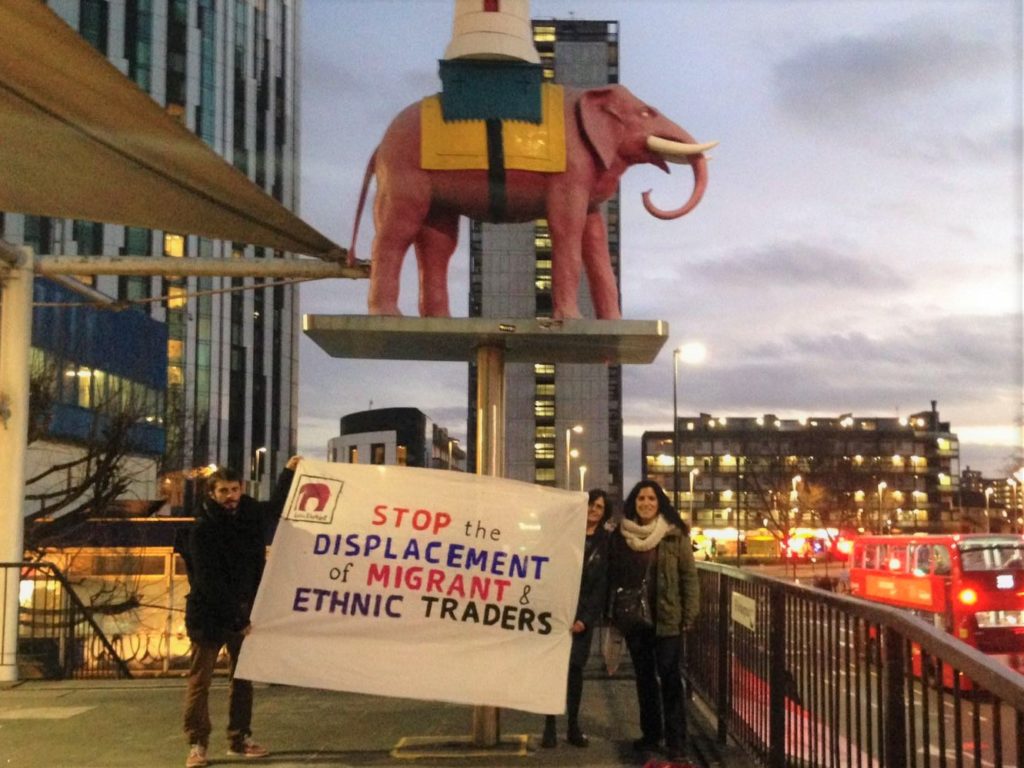
guys – seriously, stop trying to hold London back. I appreciate you have your interests here, but so does everyone else. Not everyone wants E&C to remain a shabby, run-down part of London. Embrace change! Be progressive. It is NOT going to be just for the rich. All people will be able to enjoy the new and improved Elephant & Castle! I wish you the best!
The fact you call is shabby says alot about you Simon. Your shabby to someone is home. We aren’t all wealthy and visual aspects of a building isn’t what everyone values, its the community and sense of belonging that we enjoy around here. It won’t be an improved elephant and Castle. It will be a new elephant and Castle where those who were there before will no longer be welcome. Like Brixton. I used to go to Brixton and love it. Now I feel out of place and it’s full of Caucasian yuppies, acting as though Brixton is their thing and looking down their nose at locals. Basically the same as all the white savior posing in pics of Africans thinking they have made things better when in fact they’ve ruined the entire culture and vibe of the place.
Simon, you have clearly not read the interview closely, because if you had, you would’ve noted the interviewee expressly says ‘we do not oppose the redevelopment of the site; we oppose this form of exclusionary and stigmatising development, as it comes at the price of the existing community’.
I don’t understand the mechanisms that Santiago thinks he and Latin Elephant have uses to ‘gain’ the concessions he thinks he has. If they exist he would be able to explain them and not be asking the council for the reasons they came up with the relocation fund etc – if they are things the objectors came up with they would be able to explain them. Objectors to the Elephant and Castle Square have quoted FOIs in their arguments, which shows they are from outside their involvement.
The concessions would all have been part of the normal legal discussions between a developer and a council, as anyone actually involved would know. I suspect he is massively talking up his role.